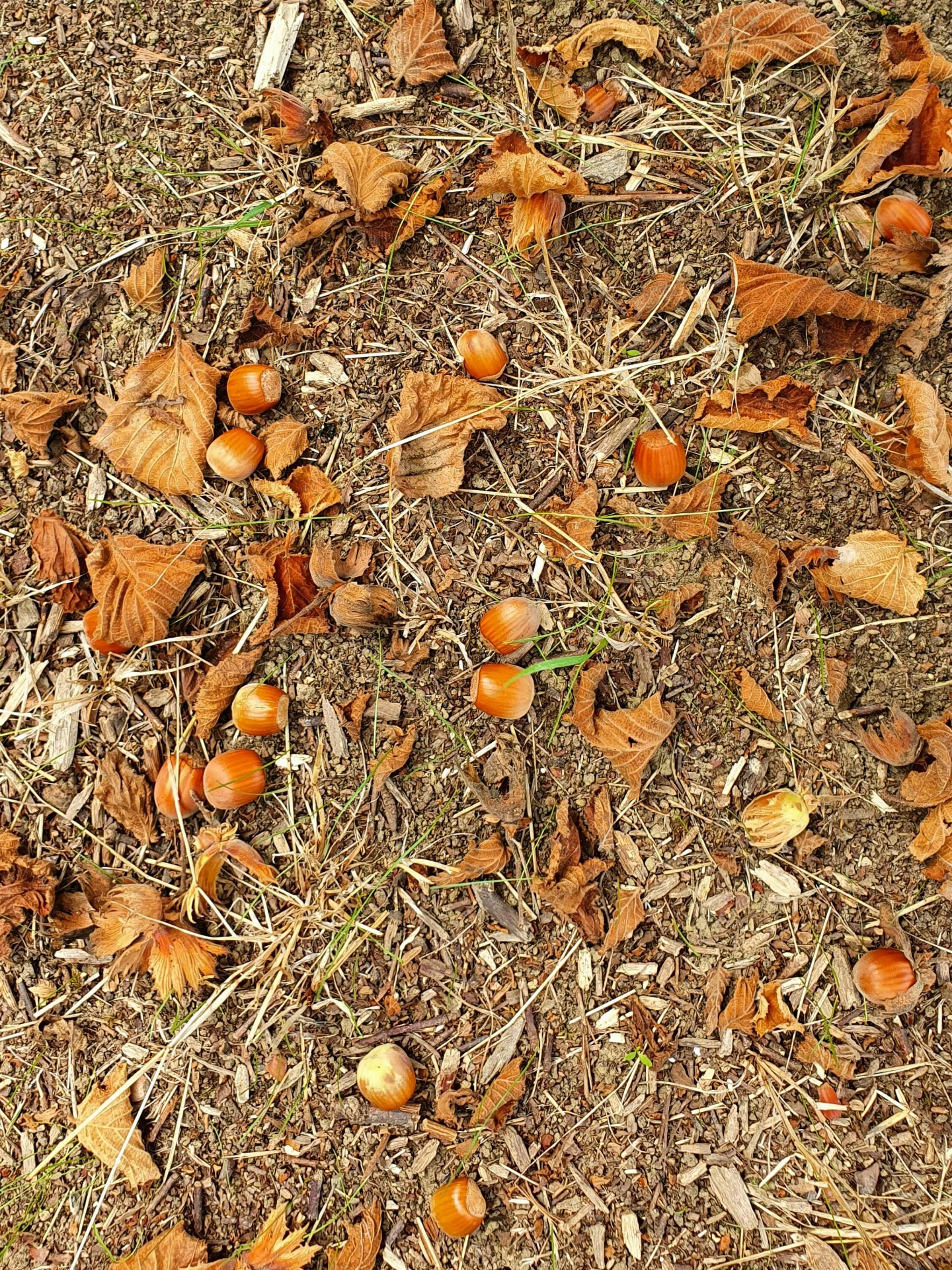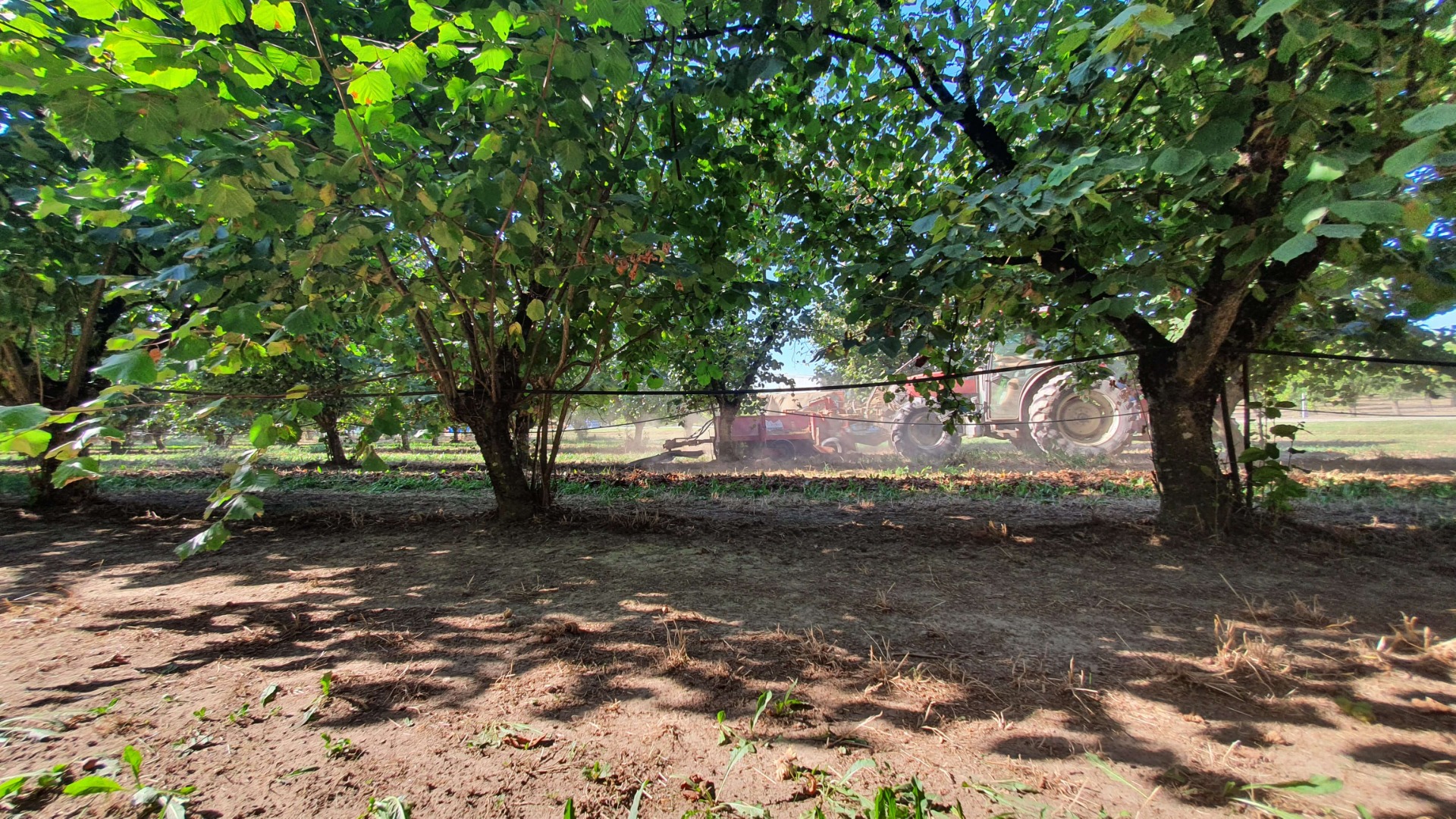
Hazelnut orchards
A little bit of history

Consequently, it imports nearly 80% from abroad, the majority from Turkey, the world's leading producer. Fortunately, the French hazelnut has a good reputation and for good reason, it is distinguished by its range of highly appreciated varieties: Pauetet, Ségorbe, Fertile de Coutard, Corabel, Ennis, Tonda di Giffoni.
Hazelnut harvesting
The harvest period usually starts in September and lasts at least one month. Depending on the earliness of the varieties, some hazelnuts fall off the tree earlier than others, which allows the work to be spread out and each orchard to be harvested in good time
If the hazelnut remains on the ground for too long and in a humid environment, it risks rotting or being eaten by predators. So there is no time to lose when it is time to harvest.
As the orchards are planted in hedges, the farmers first pass through with a windrower (a machine with brushes to gather the hazelnuts in the centre of the rows). Then, several passes with a harvester will be necessary to collect all the hazelnuts. I let you discover this short video explaining the 2022 harvest.
Each variety has its own particularity!

Table hazelnuts are aesthetically more imposing and are often used in preparations or simply to garnish delicious dishes. If the harvest allows it, ask for your sample to compare them!
Large sizes:
- Corabel : a white, firm, naturally sweet and very fragrant flesh
- Ennis : Very similar to the Corabel, the Ennis is mainly appreciated for its oil content.
- Tonda di Giffoni : Italian variety from Piëmont, known for its size and pronounced hazelnut flavour
- Fertile de Coutard : An old variety with an irregular shape, its ivory flesh reveals woody notes.
Smaller sizes:
- Pauetet : Regularly compared to the Tonda, the Pauetet has a compact and crunchy flesh. Its pronounced hazelnut taste makes it exceptional for pastry making.
- Segorbe : A larger variety than the Pauetet with a firm flesh. Often used in biscuits, its delicate hazelnut flavour is revealed when roasted.





